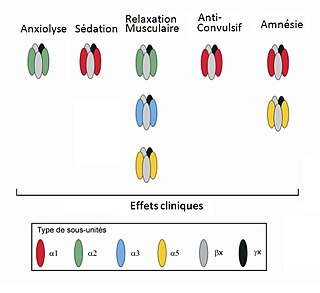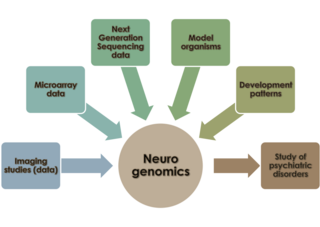
Alcoholism is a term describing the drinking of alcohol to the point that causes problems, and continuing to drink even after problems arise. Problematic use of alcohol has been mentioned in the earliest historical records, such as in ancient Egypt and in the Bible, and remains widespread; the World Health Organization (WHO) estimated there were 283 million people with alcohol use disorders worldwide as of 2016. The term alcoholism was first coined in 1852, but today the word is stigmatized and the clinical diagnostic terms alcohol use disorder or alcohol dependence are used instead.

Alcohol abuse encompasses a spectrum of unhealthy alcohol drinking behaviors, ranging from binge drinking to alcohol dependence, in extreme cases resulting in health problems for individuals and large scale social problems such as alcohol-related crimes.

Alcohol tolerance refers to the bodily responses to the functional effects of ethanol in alcoholic beverages. This includes direct tolerance, speed of recovery from insobriety and resistance to the development of alcohol use disorder.
The modern disease theory of alcoholism states that problem drinking is sometimes caused by a disease of the brain, characterized by altered brain structure and function.
Psychiatric genetics is a subfield of behavioral neurogenetics and behavioral genetics which studies the role of genetics in the development of mental disorders. The basic principle behind psychiatric genetics is that genetic polymorphisms are part of the causation of psychiatric disorders.
Peter McGuffin is a psychiatrist and geneticist from Belfast, Northern Ireland.
Gene–environment correlation is said to occur when exposure to environmental conditions depends on an individual's genotype.

Gamma-aminobutyric acid receptor subunit alpha-2 is a protein in humans that is encoded by the GABRA2 gene.

Henri Begleiter was a neurophysiologist and Distinguished Professor of Psychiatry and Neuroscience at SUNY Downstate Medical Center in Brooklyn. He was a leader in the nascent field of biomedical alcohol research in the 1970s, postulating alcoholism as a brain disorder. He founded and headed the world-renowned Neurodynamics Laboratory at SUNY Downstate Medical Center, Brooklyn, which has been renamed in 2007 into the 'Henri Begleiter Neurodynamics Laboratory'.

Neurogenetics studies the role of genetics in the development and function of the nervous system. It considers neural characteristics as phenotypes, and is mainly based on the observation that the nervous systems of individuals, even of those belonging to the same species, may not be identical. As the name implies, it draws aspects from both the studies of neuroscience and genetics, focusing in particular how the genetic code an organism carries affects its expressed traits. Mutations in this genetic sequence can have a wide range of effects on the quality of life of the individual. Neurological diseases, behavior and personality are all studied in the context of neurogenetics. The field of neurogenetics emerged in the mid to late 20th century with advances closely following advancements made in available technology. Currently, neurogenetics is the center of much research utilizing cutting edge techniques.

Polysubstance dependence refers to a type of substance use disorder in which an individual uses at least three different classes of substances indiscriminately and does not have a favorite substance that qualifies for dependence on its own. Although any combination of three substances can be used, studies have shown that alcohol is commonly used with another substance. This is supported by one study on polysubstance use that separated participants who used multiple substances into groups based on their preferred substance. The results of a longitudinal study on substance use led the researchers to observe that excessively using or relying on one substance increased the probability of excessively using or relying on another substance.

Neurogenomics is the study of how the genome of an organism influences the development and function of its nervous system. This field intends to unite functional genomics and neurobiology in order to understand the nervous system as a whole from a genomic perspective.

Behavioural genetics, also referred to as behaviour genetics, is a field of scientific research that uses genetic methods to investigate the nature and origins of individual differences in behaviour. While the name "behavioural genetics" connotes a focus on genetic influences, the field broadly investigates the extent to which genetic and environmental factors influence individual differences, and the development of research designs that can remove the confounding of genes and environment. Behavioural genetics was founded as a scientific discipline by Francis Galton in the late 19th century, only to be discredited through association with eugenics movements before and during World War II. In the latter half of the 20th century, the field saw renewed prominence with research on inheritance of behaviour and mental illness in humans, as well as research on genetically informative model organisms through selective breeding and crosses. In the late 20th and early 21st centuries, technological advances in molecular genetics made it possible to measure and modify the genome directly. This led to major advances in model organism research and in human studies, leading to new scientific discoveries.
Polysubstance was used in the American Psychiatric Association's Diagnostic and Statistical Manual for Mental Disorders to refer to three or more drugs to which an individual has become dependent. The criteria were changed in the DSM-5. In the DSM-IV nosology, polysubstance dependence indicated that the use of any one of the substances did not meet the diagnostic criteria for substance dependence while the combined use of the drugs did meet substance dependence diagnostic criteria.
Alexander Bogdan ("Bob") Niculescu, III is a Romanian born, San Diego, California, educated and trained scientist and physician. He is a Professor in the Department of Psychiatry at the Indiana University School of Medicine in Indianapolis, Indiana, Director of the Laboratory of Neurophenomics, and an Attending Psychiatrist and R&D Investigator at the Indianapolis VA Medical Center. Considered the inventor of Convergent Functional Genomics (CFG), he is a prominent figure in the field of personalized medicine in psychiatry. His early contributions to the psychiatric genetics field include identification of candidate genes, pathways and mechanisms for bipolar disorder using convergent studies In particular, his work and that of his collaborators has focused attention on circadian clock genes as core components of mood regulation Since these contributions, his research program has expanded to include similar work on schizophrenia alcoholism and stress disorders leading to the identification of panels of DNA and RNA markers for disease risk prediction and severity of illness. Niculescu pioneered early on the view that psychiatric disorders are genetically complex, heterogeneous, and overlapping, requiring gene level integration of data followed by pathway analyses. The cumulative combinatorics of common variants and environment model he described for bipolar and other complex disorders based on empirical data, is being increasingly supported by evidence from other groups working on psychiatric and non-psychiatric disorders. More recently, he has proposed a comprehensive unifying model (Mindscape) for conceptualizing how the mind works. His most recent work has focused on understanding and developing genomic and clinical risk predictors for suicide, a preventable tragedy and increasing public health problem.
Autism spectrum disorder (ASD) refers to a variety of conditions typically identified by challenges with social skills, communication, speech, and repetitive sensory-motor behaviors. The 11th International Classification of Diseases (ICD-11), released in January 2021, characterizes ASD by the associated deficits in the ability to initiate and sustain two-way social communication and restricted or repetitive behavior unusual for the individual's age or situation. Although linked with early childhood, the symptoms can appear later as well. Symptoms can be detected before the age of two and experienced practitioners can give a reliable diagnosis by that age. However, official diagnosis may not occur until much older, even well into adulthood. There is a large degree of variation in how much support a person with ASD needs in day-to-day life. This can be classified by a further diagnosis of ASD level 1, level 2, or level 3. Of these, ASD level 3 describes people requiring very substantial support and who experience more severe symptoms. ASD-related deficits in nonverbal and verbal social skills can result in impediments in personal, family, social, educational, and occupational situations. This disorder tends to have a strong correlation with genetics along with other factors. More research is identifying ways in which epigenetics is linked to autism. Epigenetics generally refers to the ways in which chromatin structure is altered to affect gene expression. Mechanisms such as cytosine regulation and post-translational modifications of histones. Of the 215 genes contributing, to some extent in ASD, 42 have been found to be involved in epigenetic modification of gene expression. Some examples of ASD signs are specific or repeated behaviors, enhanced sensitivity to materials, being upset by changes in routine, appearing to show reduced interest in others, avoiding eye contact and limitations in social situations, as well as verbal communication. When social interaction becomes more important, some whose condition might have been overlooked suffer social and other exclusion and are more likely to have coexisting mental and physical conditions. Long-term problems include difficulties in daily living such as managing schedules, hypersensitivities, initiating and sustaining relationships, and maintaining jobs.
Addiction vulnerability is an individual's risk of developing an addiction during their lifetime. There are a range of genetic and environmental risk factors for developing an addiction that vary across the population. Genetic and environmental risk factors each account for roughly half of an individual's risk for developing an addiction; the contribution from epigenetic risk factors to the total risk is unknown. Even in individuals with a relatively low genetic risk, exposure to sufficiently high doses of an addictive drug for a long period of time can result in an addiction. In other words, anyone can become an individual with a substance use disorder under particular circumstances. Research is working toward establishing a comprehensive picture of the neurobiology of addiction vulnerability, including all factors at work in propensity for addiction.
The genetic influences of post-traumatic stress disorder (PTSD) are not understood well due to the limitations of any genetic study of mental illness; in that, it cannot be ethically induced in selected groups. Because of this, all studies must use naturally occurring groups with genetic similarities and differences, thus the amount of data is limited. Still, genetics play some role in the development of PTSD.
Peter Propping was a German human geneticist.
Subjective response to alcohol (SR) refers to an individual's unique experience of the pharmacological effects of alcohol and is a putative risk factor for the development of alcoholism. Subjective effects include both stimulating experiences typically occurring during the beginning of a drinking episode as breath alcohol content (BAC) rises and sedative effects, which are more prevalent later in a drinking episode as BAC wanes. The combined influence of hedonic and aversive subjective experiences over the course of a drinking session are strong predictors of alcohol consumption and drinking consequences. There is also mounting evidence for consideration of SR as an endophenotype with some studies suggesting that it accounts for a significant proportion of genetic risk for the development of alcohol use disorder.








